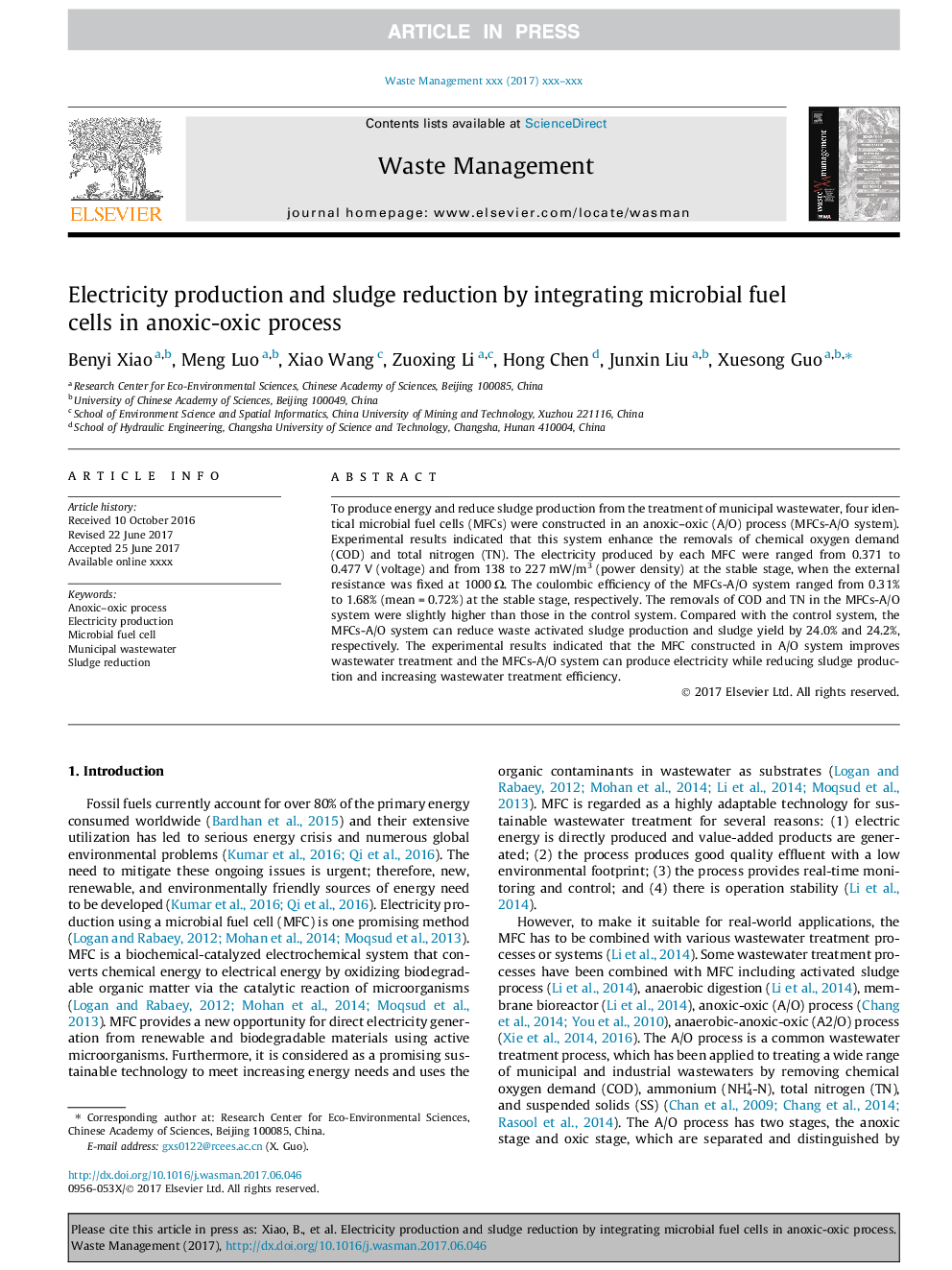| Article ID | Journal | Published Year | Pages | File Type |
|---|---|---|---|---|
| 8870438 | Waste Management | 2017 | 7 Pages |
Abstract
To produce energy and reduce sludge production from the treatment of municipal wastewater, four identical microbial fuel cells (MFCs) were constructed in an anoxic-oxic (A/O) process (MFCs-A/O system). Experimental results indicated that this system enhance the removals of chemical oxygen demand (COD) and total nitrogen (TN). The electricity produced by each MFC were ranged from 0.371 to 0.477 V (voltage) and from 138 to 227 mW/m3 (power density) at the stable stage, when the external resistance was fixed at 1000 Ω. The coulombic efficiency of the MFCs-A/O system ranged from 0.31% to 1.68% (mean = 0.72%) at the stable stage, respectively. The removals of COD and TN in the MFCs-A/O system were slightly higher than those in the control system. Compared with the control system, the MFCs-A/O system can reduce waste activated sludge production and sludge yield by 24.0% and 24.2%, respectively. The experimental results indicated that the MFC constructed in A/O system improves wastewater treatment and the MFCs-A/O system can produce electricity while reducing sludge production and increasing wastewater treatment efficiency.
Related Topics
Physical Sciences and Engineering
Earth and Planetary Sciences
Geotechnical Engineering and Engineering Geology
Authors
Benyi Xiao, Meng Luo, Xiao Wang, Zuoxing Li, Hong Chen, Junxin Liu, Xuesong Guo,
